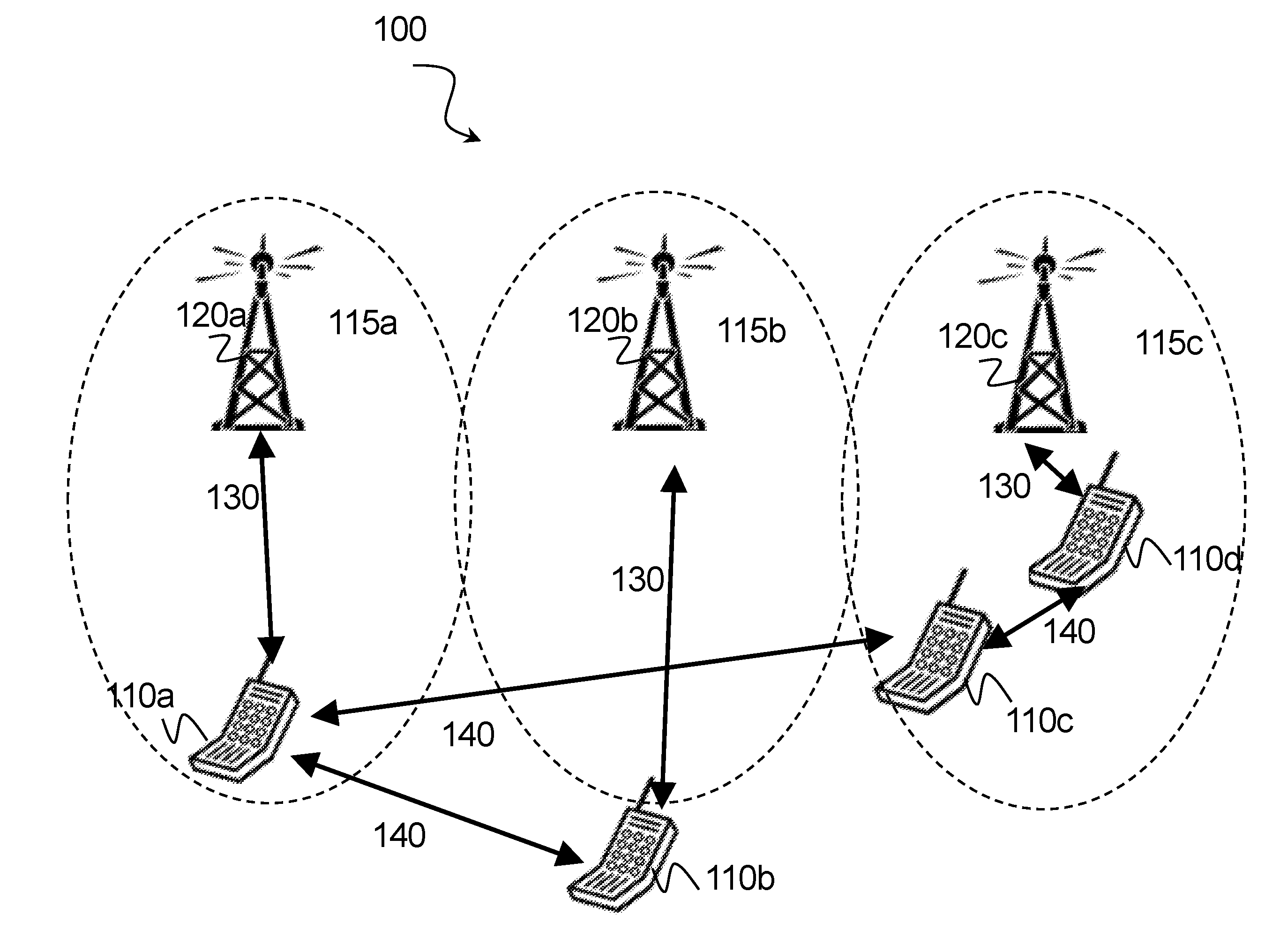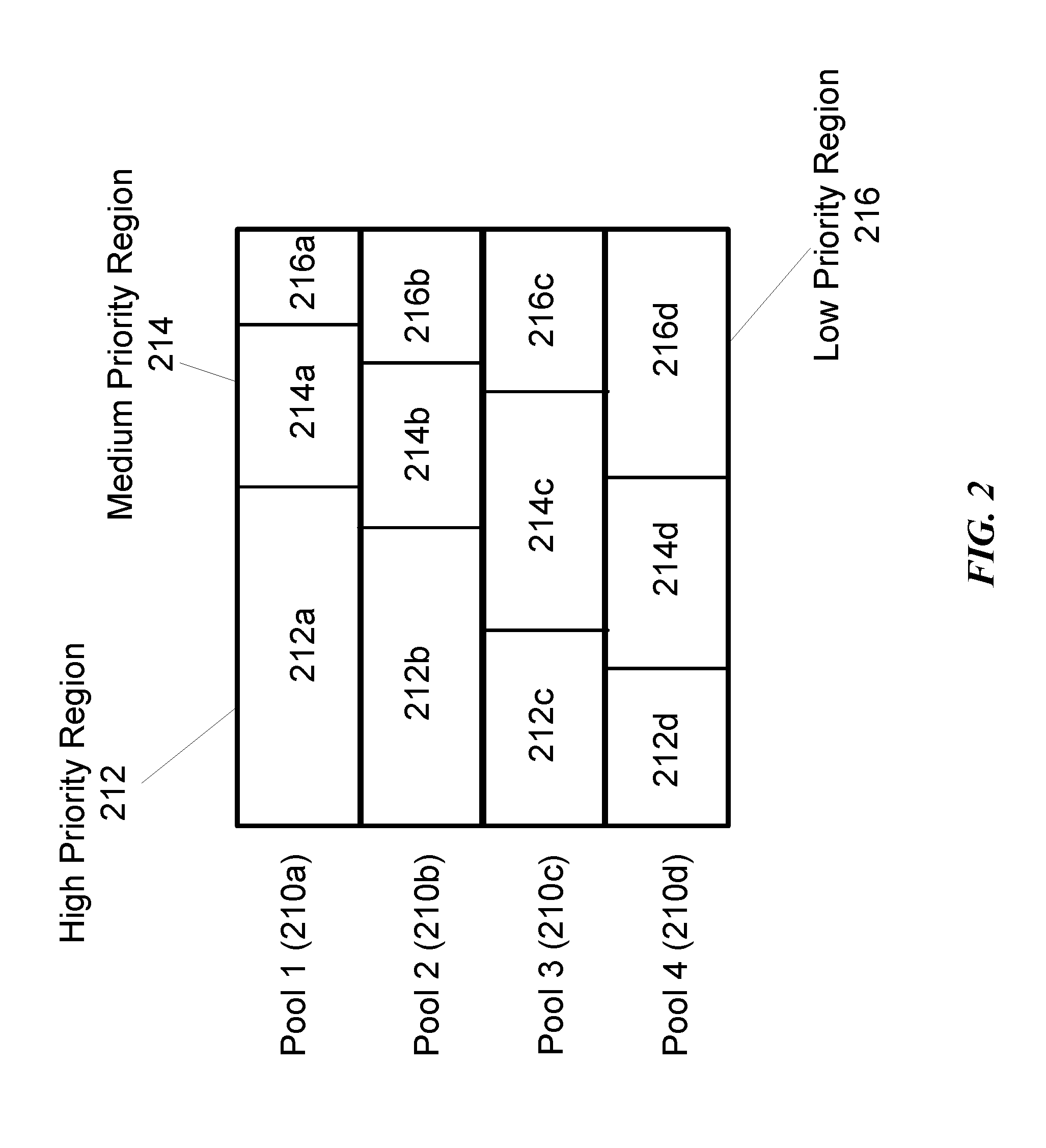Device-to-device priority pool configuration
- Summary
- Abstract
- Description
- Claims
- Application Information
AI Technical Summary
Benefits of technology
Problems solved by technology
Method used
Image
Examples
Embodiment Construction
[0042]Device-to-device (D2D) communications, such as public safety communication or vehicle-to-vehicle communication, may benefit from proximity services (ProSe) group priority. Conventional strategies for prioritizing resource pools comprise static mappings of priorities to pools. A particular risk with static mappings is that particular pools may be over or underutilized. For example, certain pools may carry too much traffic (i.e., high load), resulting in congestion, even though resources are available in other pools.
[0043]Particular embodiments obviate the problems described above and include dynamic prioritization of device-to-device (D2D) resource pools. Particular embodiments configure the resource pools so that pool priorities may overlap according to particular rules. For example, if no high priority users are communicating, all D2D resources may be available to all users. If users with a mix of priorities are communicating, the network may reserve portions of each resource...
PUM
 Login to View More
Login to View More Abstract
Description
Claims
Application Information
 Login to View More
Login to View More - R&D
- Intellectual Property
- Life Sciences
- Materials
- Tech Scout
- Unparalleled Data Quality
- Higher Quality Content
- 60% Fewer Hallucinations
Browse by: Latest US Patents, China's latest patents, Technical Efficacy Thesaurus, Application Domain, Technology Topic, Popular Technical Reports.
© 2025 PatSnap. All rights reserved.Legal|Privacy policy|Modern Slavery Act Transparency Statement|Sitemap|About US| Contact US: help@patsnap.com



